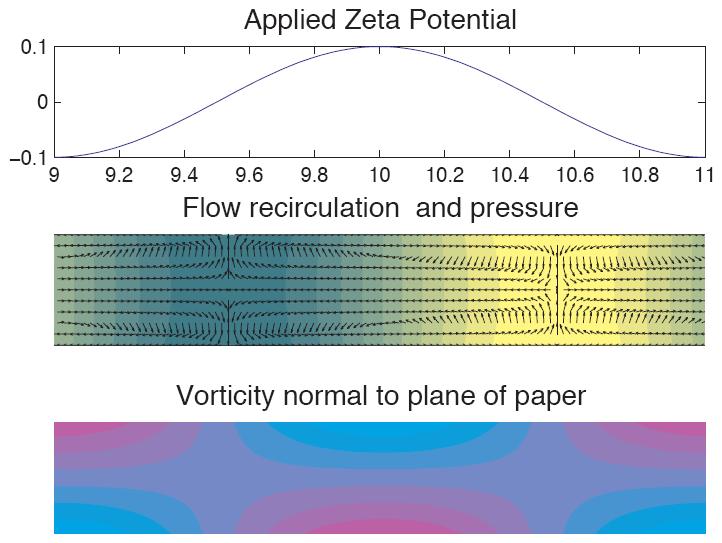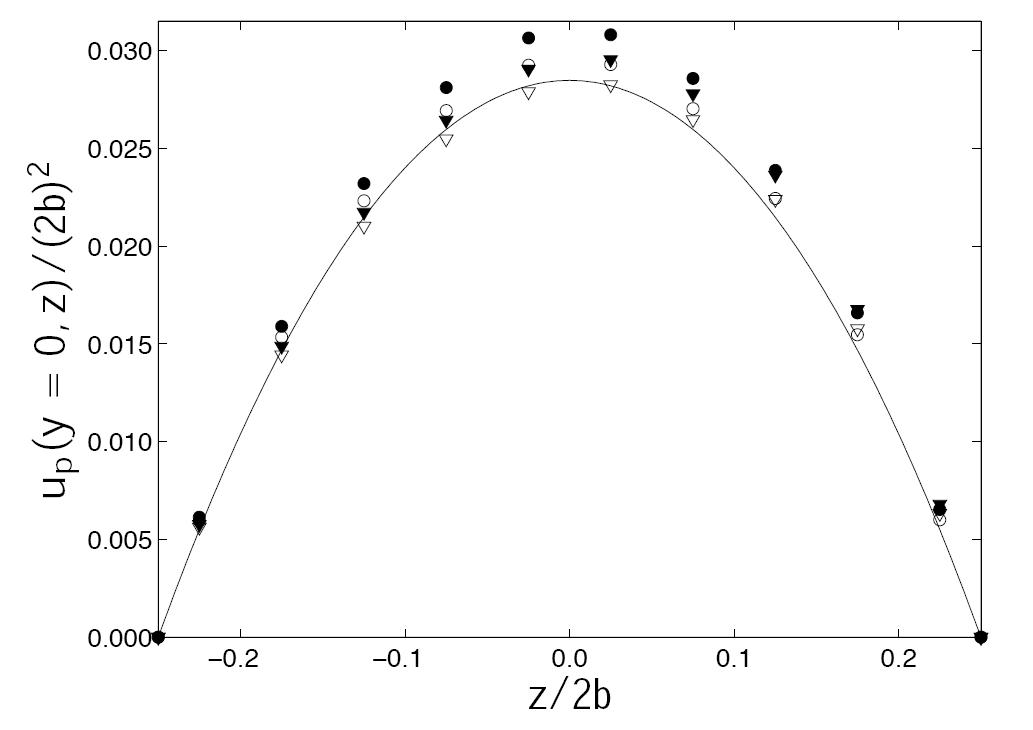Research / Mechanics in Biology & FluidsFlow and Dispersion in Electrokinetic Separations
Capillary Electrophoresis (CE) is a fundamental technique in bioanalytical chemistry for sorting molecules by their electrophoretic mobilities. Good separation requires that axial spreading of the sample be minimized. This research has the broad objective of developing predictive tools by which such axial dispersion can be calculated. The subject of study is the electroosmotic flow in CE channels, since it is the inhomogeneities in this flow that play a large role in dispersion.
This can be seen in the figure above which shows results [reproduced from Datta, S., Ghosal, S. & Patankar, N. Electrophoresis (2006) vol. 27 pg. 611] from a 3D finite element computation. A small sinusoidal perturbation (top panel) in the zeta-potential is applied to a microfluidic channel of rectangular cross-section. The center panel shows the resulting pressure pattern (colors) and perturbation velocities (arrows); the vorticity is depicted in the lower panel. The shear in the flow field is responsible for Taylor-Aris dispersion which is almost absent in a uniform channel. Computations like these are however very expensive because of the large separation of scales between the axial and cross-channel directions.
Asymptotic methods that we have developed can take advantage of this scale disparity (which provides a small dimensionless expansion parameter) to generate reduced one dimensional models that can either be solved analytically or computed with very little effort. The panel below shows comparisons between numerical simulations (symbols) and asymptotic theory (line) for the flow perturbation divided by the magnitude of the pressure gradient.



